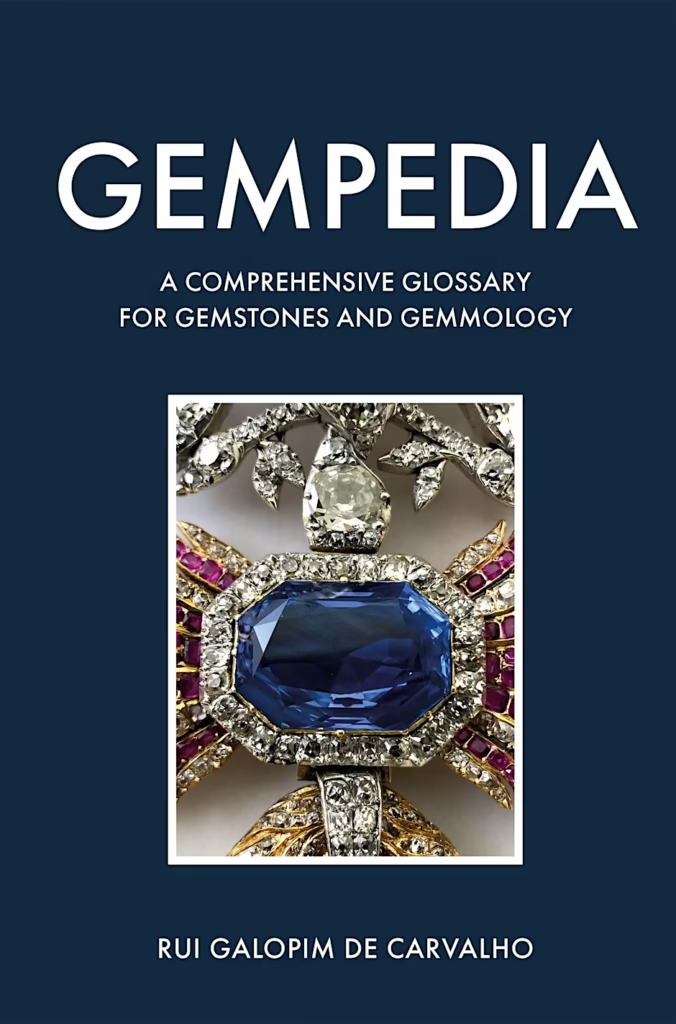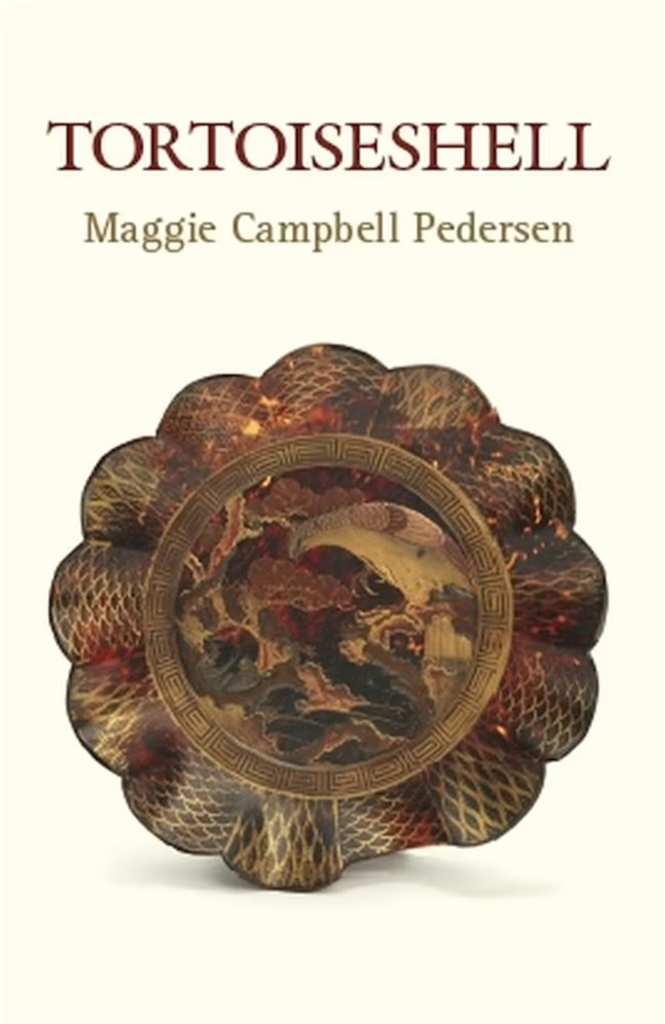
What are the Moonstones?
Those new to gemmology often find themselves drawn to the silvery blue light of moonstones, but trained gemmologists have a finer grasp of what causes this unusual optical effect. Here, Gem-A Tutor Pat Daly dives into the world of moonstones and adularescence, giving an overview to inspire further study via our GemIntro or Gemmology Foundation courses…
Moonstone, one of the most popular varieties in the feldspar group of gemstones, displays a silvery-to-bluish reflection effect which has been compared to moonlight. It is a generally accepted birthstone for the month of June, and because the manned Moon landings were launched from Cape Canaveral, it is the state gemstone for Florida in the USA. The moonstone effect, called adularescence, sheen or schiller, is strongly directional, meaning that it is only seen when the stone is illuminated and viewed from particular directions.
Feldspar Minerals
Feldspars are a group of minerals which are common in igneous and metamorphic rocks, though gem-quality stones are rare. There are several species, almost all of which are aluminium silicates with potassium, sodium or calcium. Moonstones are feldspars which contain potassium and sodium. The atoms of these elements have different sizes. Growing feldspar crystals can accommodate both because, at high temperatures, atoms vibrate more, and there is more space between them. Size differences between atoms do not matter as much as they do at lower temperatures since more space is available for them. As temperatures fall, less space is available, and it is easier for the structure to host mostly one or the other. Slow cooling, which is to be expected when rocks form several kilometres beneath Earth’s surface, provides time in which atoms can move from one part of a crystal structure to another. These parts become richer in potassium or sodium than the crystal as a whole. The locations and orientations of these areas are controlled by the host crystal and their sizes by the cooling rate.
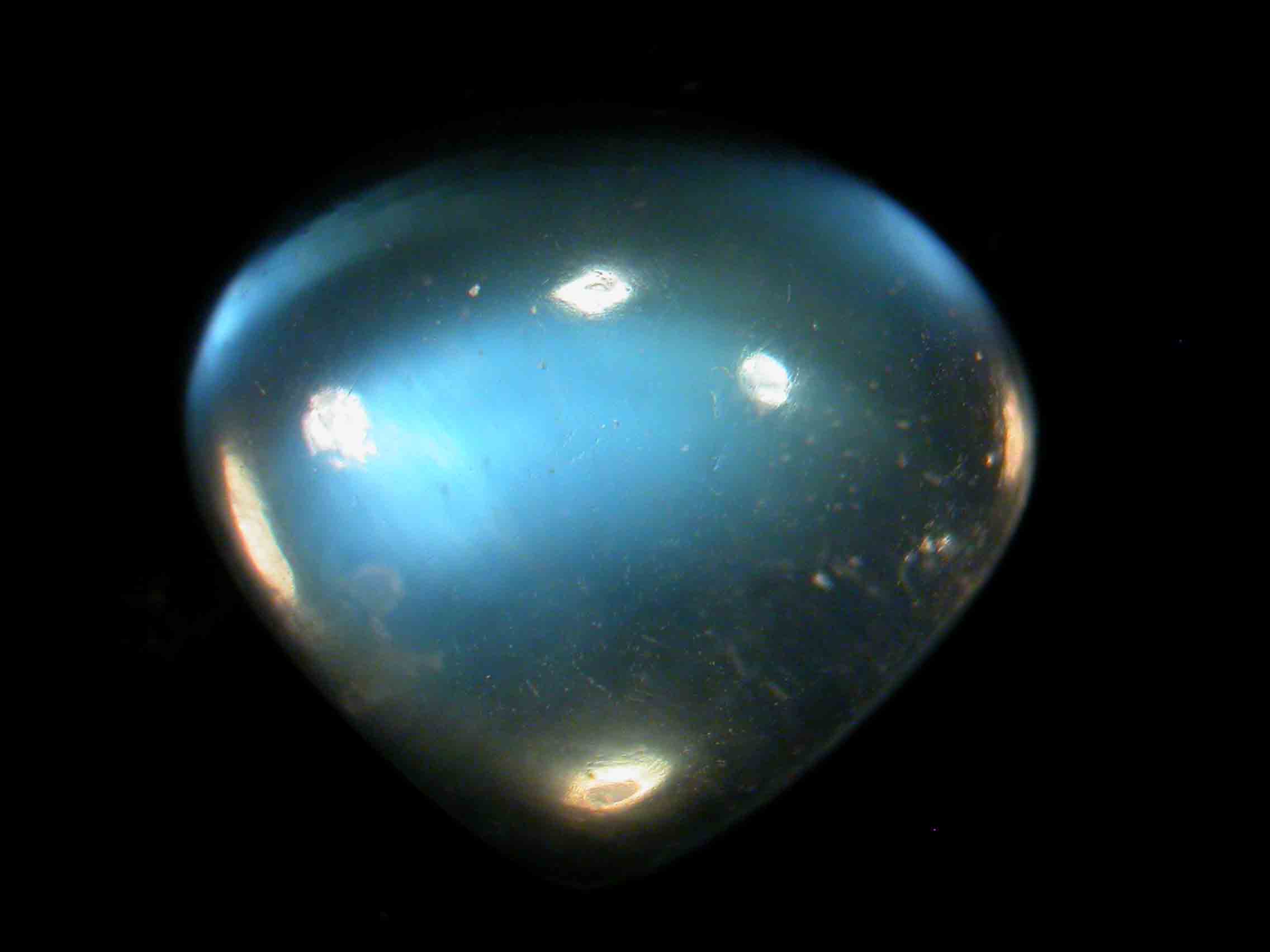
A moonstone simulant (doublet) photographed by Pat Daly from the Gem-A Archives.
This process, called exsolution, produces oriented layers and inclusions of one type of feldspar in another. Differences in their optical properties produce reflection and scattering effects. Relatively coarser structures cause whitish to silvery reflections, but smaller ones are needed for the more favoured blue adularescence.
Moonstone Body Colour
The body colours of moonstones may be nearly white, yellow to orange and brown, pink and grey, and they vary from transparent to opaque. Adularescence is best displayed on low to medium-domed cabochons, but rarely, stones are faceted, and there is a fine moonstone cameo in the collection of the Natural History Museum in London. Sometimes, reflection is confined to a line, producing a moonstone cat’s eye, and four-rayed star stones may be seen as well.

Cat’s eye moonstone from the Gem-A Archives.
Moonstones and Labradorite
Labradorite, a feldspar which contains sodium and calcium, is a well-known iridescent gemstone. Most of it is greyish and translucent because of its many inclusions, but some is nearly white and transparent. Stones of this kind which display blue, green, yellow to orange and reddish iridescence, in which the different colours may be separated by straight boundaries, are called rainbow moonstones. It usually has whitish inclusions but is sometimes clean; the best quality stones are highly prized. Exsolution of more sodium or calcium-rich layers and thin film interference are thought to be responsible for iridescence in labradorite.

Labradorite from the Gem-A Archives.
The quality of both moonstone and rainbow moonstone depends on body colour, transparency, freedom from eye-visible inclusions, the extent and brightness of iridescence, cutting style, orientation and size.
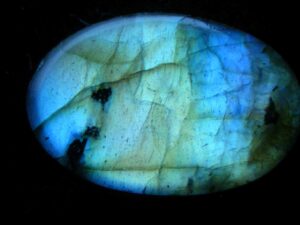
Labradorite photographed by Pat Daly from the Gem-A Archives.
Blue Adularescence in Moonstones
In moonstone, bluish adularescence is favoured over a whitish or silvery effect; stones should be transparent and body colour as inconspicuous as possible. Adularescence is strongly directional, so stones need to be cut in the correct orientation. Usually, this means a stone looks its best when viewed at 90° to its base.
Rainbow moonstone is valued in much the same way, except that stones with a reddish iridescence may attract a premium.
Identifying Moonstones
Moonstone may be separated from other materials by appearance, its refractive index (RI) and double refraction, pleochroism, inclusions and luminescence. Its RI is about 1.52, it behaves as an anisotropic single crystal on the polariscope and displays whitish-to-yellow or brownish pleochroism. Intersecting cleavages sometimes combine to produce elongate “centipede” inclusions not found in other stones. Most feldspars, including moonstone, fluoresce reddish in short-wave UV. Few simulants do so. Labradorite may fluoresce whitish in long-wave UV; any long-wave fluorescence in moonstone is usually reddish.
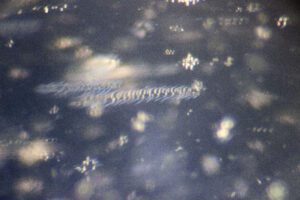
Centipede inclusions in moonstone, photographed by Henry Mesa, from the Gem-A Archives.
Labradorite, including rainbow moonstone, almost always shows lamellar twinning, which may be seen with a loupe as elusive planar structures or, more dramatically, when suitably oriented on a polariscope. Moonstone does not show lamellar twinning. The approximate RI of labradorite, at 1.56, is measurably higher than that of moonstone. It does not contain “centipede” inclusions and seldom exhibits pleochroism.
Conclusion
Moonstones, in the wide sense and including rainbow moonstones, are among the most desirable of the phenomenal gem materials, which owe their appeal not just to their body colours but display some additional optical effect. They are not as famous as rubies, sapphires and emeralds, for example, but they are appealing gemstones which are available in a wide range of qualities and values, and they are used extensively in the jewellery trade.

